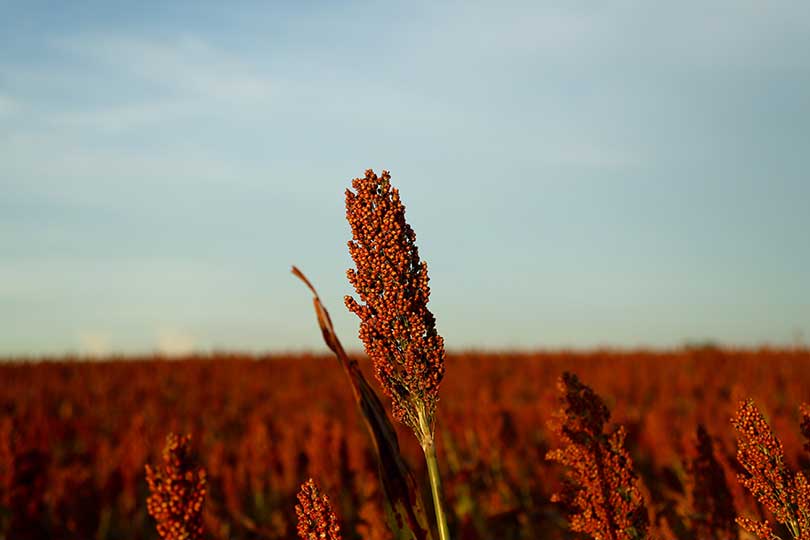Plentiful rainfall followed by mostly hot, dry weather is a combination that has helped farmers produce high-yielding row crops, according to Texas A&M AgriLife Extension Service experts.
“We’re winding down a very good crop year for the Rio Grande Valley,” Brad Cowan, Hidalgo County Extension agent, told AgriLife Today. “We had a lot of rain last fall and winter that replenished deep soil moisture and contributed to the higher-than-normal yields for grain sorghum and corn crops.”
Extension specialist Danielle Sekula-Ortiz said the heat has helped the crops mature quickly, allowing farmers to harvest before the insect pressures could build. The lack of rain also kept insect pressures relatively low in cotton.
Many farmers only had to spray once this year before populations got too high.
“Growers were able to control the aphids with a spray application for the first peak, and many avoided a second spray by harvesting before the second peak in late June, July,” Sekula-Ortiz said.
Many farmers opted to plant more acres of corn instead of grain sorghum in South Texas, she noted.
“Corn yields were excellent, even in the dryland acres of the McCook area,” Sekula-Ortiz said. “Grain sorghum also yielded well, both dryland and irrigated.”
Yields in West Texas are also expected to be above average. The crops were far enough along in their growing cycle that the extreme heat hasn’t caused significant stress to sorghum.
Most West Texas farmers have also stayed ahead of the insect and sugarcane aphid issues this year.
“There are a few more acres planted in milo this year compared to last year. We have learned how to deal with the aphid situation, which hit hard two years ago by surprise,” Donnie Schwertner told the Standard-Times. “They are in there this year, but they have been controlled by spraying for the most part.”
The dryland cotton in West Texas just began blooming and is doing okay despite the extreme temperatures, according to Kenny Gully, who farms in the San Angelo area. The irrigated cotton is in full bloom and the water wells are holding.
But South Plains dryland cotton is struggling and needs a drink soon, and irrigation on the fields is struggling to keep up with water demands.

